Building a Brand: Nissin Furniture Crafters
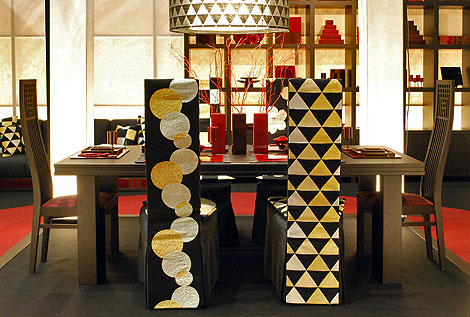
The Hida-Takayama region of Gifu prefecture is a mountainous area home to a longstanding furniture industry. Surrounded by abundant forests, the people have used wood to make the necessary tools and furniture for their daily lives for generations. The highly skilled carpenters of Hida, the “Hida Takumi” have been building beautiful temples and shrines since the (710 – 794). However, in recent years, the industry is nursing several problems, most prominently a lack of successors to the business. Nissin Furniture Crafters, a local furniture manufacturer, is embracing both the history and the problems of the industry and taking on a project which combines the traditional and the new in a complete lifestyle brand.
Interview by Reiko Yamamoto. Translation by Claire Tanaka. Edited by Takafumi Suzuki
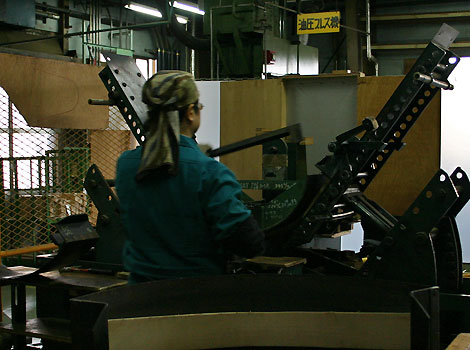
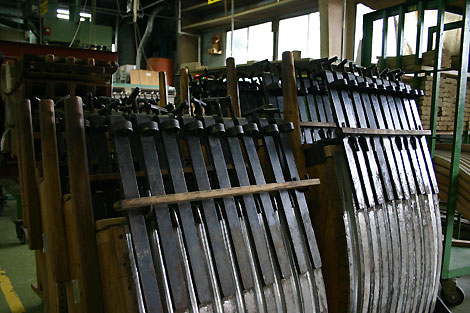
Q: As a furniture manufacturer, you’re quite active in collaborating with other traditional craftspeople here in Gifu prefecture. Could you tell me a bit more about that?
A: Obana: Just to give some background, there is a big problem these days in finding successors for traditional craftspeople. There are five Nationally Designated Traditional Craft Products which are produced in Gifu prefecture (Hida Shunkei Lacquerware, Ichii Itto Yew Wood Carvings, Mino-yaki Pottery, Mino Washi Paper, and ), but the number of craftspeople is dropping. Our company’s president, Mr. Hitoshi Kitamura, was saddened by this situation and decided to do something to overcome some of the existing barriers. About eight years ago, he gathered five willing companies producing five big Gifu products: Gifu textiles, Mino paper, Mino pottery, Seki blades, and Hida furniture and started a total lifestyle brand called “Re-mix.” With some support from the prefectural government, they participated in exhibitions both domestically and overseas. Starting in 2004, they applied to participate in the JAPAN BRAND program with the assistance of the Takayama Chamber of Commerce and Industry, and were selected. They decided to re-name the project “Re-mix Japan” and put more energy into expanding activities overseas.
Q: What kind of activities has Re-mix Japan been involved in?
A: Obana: The Re-mix Japan concept is “A Japanese Sense of Beauty: Harmonious Living.” Normally, companies and production regions do their own product development, but our project is about crossing over those existing frameworks and developing one brand from five companies. Furniture, ceramics, textiles, lighting, everything must be coordinated to fit together in a space. We hired designer Kiyoshi Satogawa (President of Zero First Design) as a producer, and he is in charge of designing or selecting the items for each company and steering the development. We based our concept on the image of the owner of a chic downtown interior lifestyle shop or concept shop who selects each piece to sell based on his own taste. Here at Nissin Furniture Crafters, we have been commissioning furniture designs from Mr. Satogawa for twenty-five years, and he also has experience designing other products, so we asked him to be in charge of controlling the style of the brand.
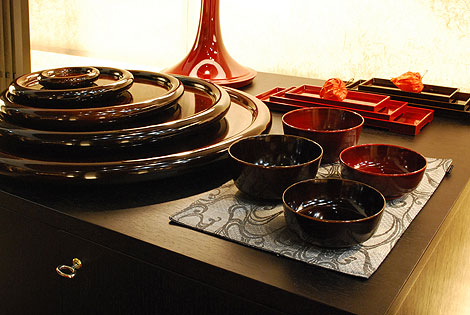
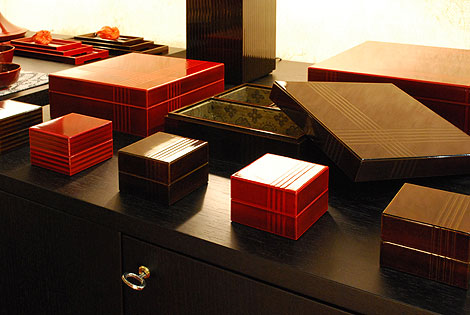
Q: I was really impressed with the work Re-mix Japan has done with the Hida Shunkei lacquerware, which is a designated national traditional craft product.
A: Obana: The Hida Shunkei lacquerware plays an important role in tying the whole Re-mix Japan brand together. Hida Shunkei lacquerware started being manufactured in the Edo period, and tea master Shigechika Kanamori chose to use it for his tea utensils, and so the products were introduced to Kyoto, and after that they became known nationwide. The distinctive quality of Hida Shunkei lacquerware is that it develops a transparent quality as it hardens over time, and the wood grain underneath begins to show through. It’s a technique called “sukashi urushi” (transparent lacquer). Unlike Wajima lacquerware and Aizu lacquerware where the base coats are laid so thick that the wood grain can’t be seen, the technique was developed in order to show off the beautiful wood grain. We’ve put this lacquerware at the heart of the Re-mix Japan aesthetic, using it in dishes and stacking boxes, as well as using elements of it in furniture and lighting as well.
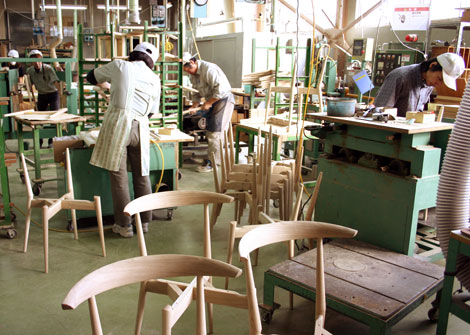
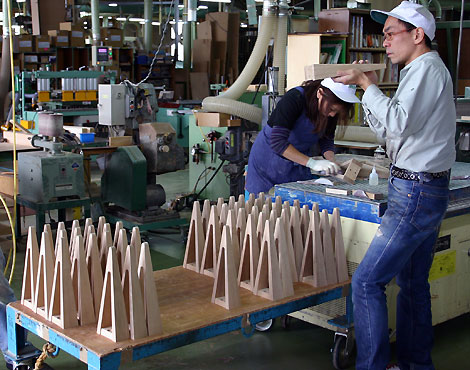
Q: It’s one thing to talk about gathering multiple companies together to produce one brand, but I imagine that the participating companies must have had varying degrees of engagement with the project.
A: Obana: Yes, it’s no simple thing to get companies with all different levels of capital and scope to cooperate together on something. Starting up the previous incarnation of Re-mix Japan, Re-mix, was particularly difficult. The president and I travelled all over the prefecture looking for companies who would do the project with us. Some companies started out saying they wanted to participate but wound up dropping out because of differences in thinking. The companies who had a similar perspective about the project and were ready to give it their all, they’re the five companies who are left now. During the course of the project, we’ve gone together with the designer to the participating companies many times. We’ve had to work really hard to keep everyone on the same page.
Q: It’s been four years since you formed the Re-mix Japan project. What kind of results do you have to show for your hard work?
A: Obana: What I really want now is to get an agent overseas so we can improve our sales. To tell you the truth, we still haven’t met our initial goal. But one of the Re-mix Japan items, our recycled tableware series RE-shokki (dishes made by grinding up old, broken dishes, mixing the powder with clay and forming the resulting material into new dishes) is being sold at MOMA in New York, and a hotel in Europe has picked up a jewelry box that we make. Individual products are gradually beginning to gather attention. We haven’ t achieved our initial goal of getting our name known as a whole lifestyle brand, but what we’ve got is an important first step.
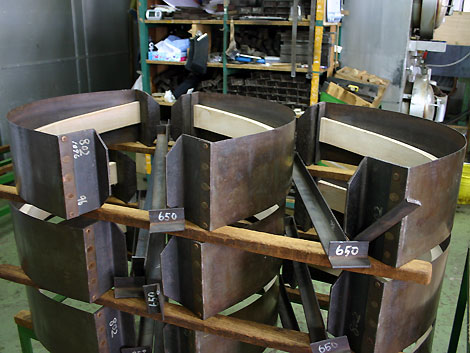
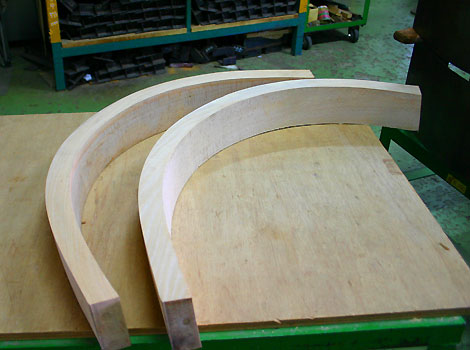
Q: Re-mix Japan uveils new products every year. What kind of new furniture does Nissin Furniture Crafters have lined up for the coming year?
A: Yajima: We’re developing a sideboard right now, as a part of our efforts to strengthen our living room item lineup. Mr. Satogawa’s designs use a lot of simple lines, and the sideboards we’ve made up to now have echoed the lines of the chairs we make. This year, we’ve revised the size and added an inner chest inside the door, to improve usability. In order to bring out the wood grain, we did the front panel in a checkerboard pattern, and used a technique called uzukuri to finish the wood, which creates a dynamic surface that physically emphasizes the grain of the wood. The color is the same as always, black, but I think the design is very expressive so the black really contributes to making a strong impression. We plan to unveil our new products at the Maison et Objet in January of 2009.
Q: As a product manufacturer, what are some of the benefits to participating in the Re-mix Japan project?
A: Yajima: Even if you look at our woodcraft techniques alone, we stand up to the best in the international market, and we actually have quite a good reputation among our overseas clients. Through Re-mix Japan, we’re thinking we can make something completely new by incorporating the traditional Hida Shunkei lacquer work into our products. It’s something we can’t do in our factory alone, so we’ve got to transcend the factory and do a lot of fine adjustments, but we learn a lot from that as well. The participating members have been collaborating for several years now, so while we started out applying lacquer to furniture, we’ve started developing products like ceramic cups that incorporate lacquer and other never-before-seen items. By combining techniques and making new designs through the Re-mix Japan project, our possibilities are expanding.
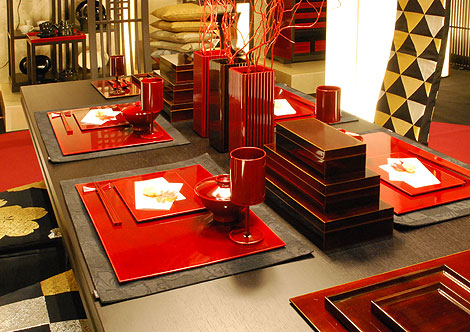
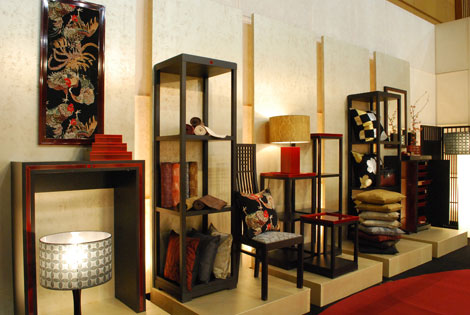
Q: Finally, could you tell me a bit about your plans and challenges for the future?
A: Obana: If we had the money, ideally we’d like to set up a showroom in Paris so that our overseas clients could view our products year-round. It’s very hard to build up a brand and develop a relationship with customers when you only display your product for a few days each year at trade shows. But as long as we have the support of JAPAN Brand, I think it’s very important that we continue participating in overseas trade shows, because even if it is only for a few days, we’ve got to take that chance to let more people find out about our products. I believe that if we keep working at it, something will happen for us.
Yajima: Of course I want to improve the quality of our products, but I think it’s also important to continue evolving from the design perspective as well. Nissin Furniture Crafters is particularly experienced in the technique of bending wood, and a soft, curving line is a feature of our furniture. If we could incorporate Nissin Furniture Crafters’ technical expertise and resources into Mr. Satogawa’s straight line-focused Re-mix Japan designs, I think we could make the brand even more deep and solid than it is now.
Nissin Furniture Crafters,
Kiriu-machi 7-78, Takayama City, Gifu
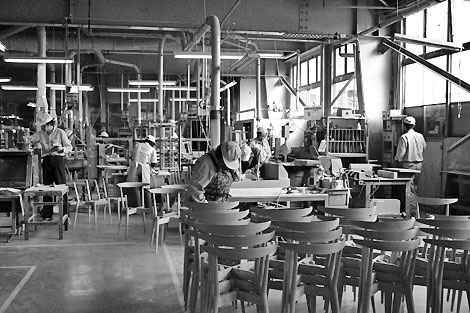
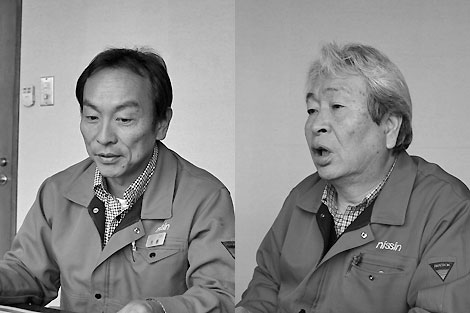
A Word from a Regional Project Participant


Gifu prefecture, in particular the Hida and Mino regions, has produced several excellent traditional crafts and tools. However, the diversification and individualization of consumers has resulted in a demand for more harmonized living spaces. People are not satisfied with a merely functional product; they demand products that will contribute to a sense of lifestyle. It was with this in mind that the Takayama Chamber of Commerce and Industry began to participate in the JAPAN BRAND Development Assistance Program in 2005 and formed a brand called Re-mix Japan. The brand is a line of homewares based on traditional industry products which uses Hida Shunkei lacquerware to tie the brand together. Our concept is, “A Japanese Sense of Beauty: Harmonious Living.” Five manufacturers have come together and created a line of products that go beyond the tried and true traditional crafts. There are cups and stacking boxes made of Hida Shunkei lacquer, sofas and tables made in the Hida woodcrafting tradition with Hida Shunkei lacquer accents, interior lighting made with Mino Washi paper, environmentally friendly dishes made with Mino-yaki pottery techniques, and textile pieces made from woven Mino Washi paper. By making items that have been designed as part of a whole interior design, we promote an entire lifestyle with our brand. With a manufacturing process rooted in traditional techniques, and simple, quality materials such as wood, paper, lacquer, silk, and clay, we produce products with both the environment and people’s health in mind. We’ve set our sights on establishing a firm presence in the European market and to that end we’ve participated in international furniture trade shows in Paris, France, namely the Planete Meuble, and the Maison & Objet. As a result, a small number of our products have succeeded in the international market, and we are gradually approaching our goal. We plan to continue the project with the support from both JAPAN BRAND and other sources during the coming year.
Japan Brand
Japan Brand



